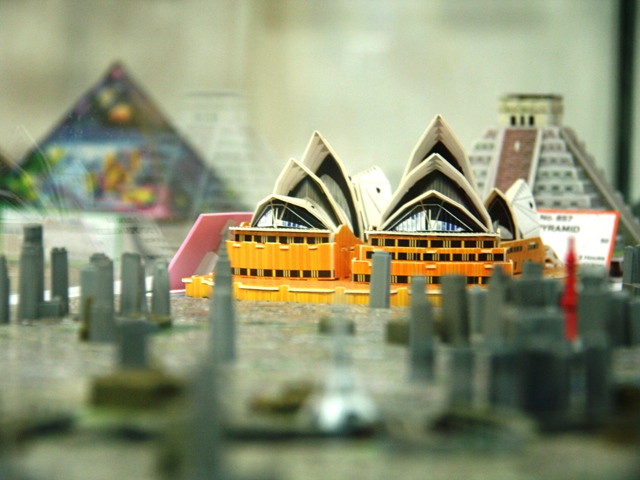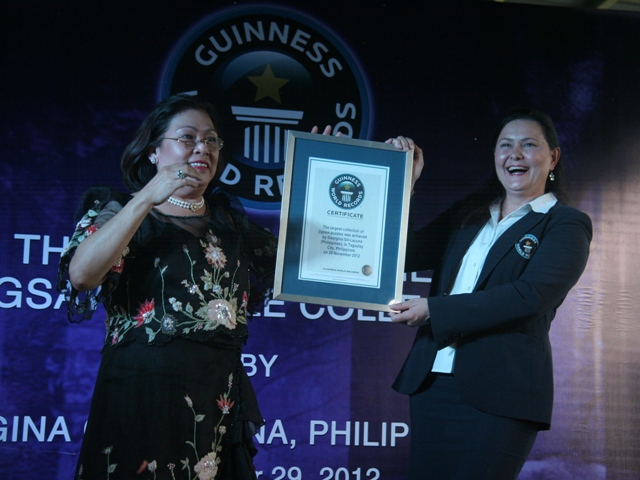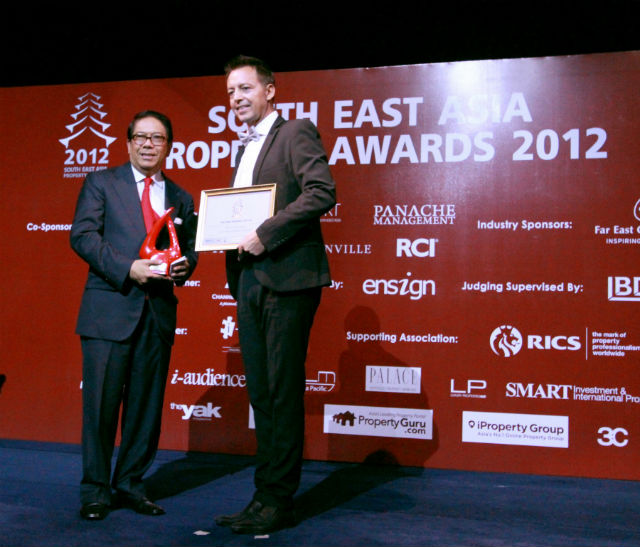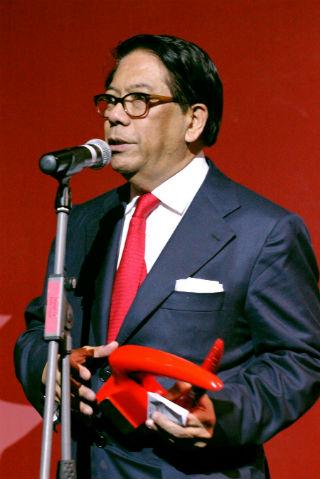Surprising 7.1%
growth
PH economy best performer in Southeast
Asia
By Riza T. Olchondra
Philippine Daily Inquirer
Thursday, November 29th, 2012
 |
| This file photo shows Manila's financial district, pictured in June. The
Philippines says its economy expanded a better-than-expected 7.1 percent year on
year in the three-months to September on the back of a robust services sector (Yahoo! Philippines) |
The Philippine economy grew 7.1 percent in
the third quarter year-on-year, exceeding expectations and making it the best
performer in Southeast Asia.
The country’s economic growth was the
strongest in Asia during the period after China’s.
“We are well on our way to surpassing our
growth target of 5 to 6 percent this year,” Socioeconomic Planning Secretary
Arsenio Balisacan told reporters on
Wednesday.
Balisacan said the high growth of the
gross domestic product (GDP), the value of goods produced and services rendered
in a given period, was expected to translate to more jobs and better incomes for
Filipinos.
A jump in third-quarter farm output and a
late rebound in exports also contributed to the economy’s 1.3-percent growth
rate in the July-September quarter from April-June, which was three times as
fast as economists had predicted.
Robust domestic consumption and higher
government spending have helped cushion the economy from the worst of the global
slowdown, while manageable inflation has allowed authorities to keep interest
rates conducive to growth.
The country is the only economy in the
world which the International Monetary Fund (IMF) believes will grow faster than
earlier expected this year.
Earlier this month, the IMF raised its
2012 growth outlook for the Philippines to more than 5 percent from its October
forecast of 4.8 percent, citing its sound fiscal and monetary policies.
‘Diamond’ of region
“The Philippines is the diamond of the
region this year,” said Enrico Tanuwidjaja, economist for Southeast Asia at RBS
in Singapore.
Indonesia was the second-best performer in
Asean with 6.2 percent growth, followed by Malaysia (5.2 percent), Vietnam (4.7
percent), Thailand
(3 percent) and Singapore (0.3 percent).
China posted a 7.7-percent GDP growth.
Balisacan said the third-quarter
performance of the Philippine economy was way above the market’s media forecast
of 5.4 percent.
The growth momentum is expected to
continue next year as government works to ease the cost of doing business and as
more infrastructure projects under the private-public partnership scheme get
underway, he said.
Record infra budget
The government has set a record
infrastructure budget of over P400 billion next year as it pursues major
upgrades of roads, ports, bridges and airports to speed up growth and boost
private investment.
Balisacan said these along with finance
department’s tapping of the country’s record foreign reserves to pay its foreign
debts would ease the upward pressures on the peso next year.
The peso is Asia’s best performing
currency so far this year, up more than 7 percent against the US dollar on
strong foreign inflows into Philippine stocks and bonds, fueled by forecasts of
sustained and resilient domestic growth.
Year-to-date growth is already at 6.5
percent with services and industry (except mining) still driving growth.
Officials said the full-year growth would
likely beat the target of 5 to 6 percent and move toward the previously
“aspirational” 7-8 percent needed per year to spur employment and curb poverty.
A strong BPO sector, booming construction,
increased consumer and government spending, and external trade contributed to
the highest quarterly growth since 2010, said
Jose Ramon G. Albert, secretary general of
the National Statistical Coordination Board.
Property boom
Among industries, construction posted its
highest growth in at least six quarters, jumping 24.3 percent from a year
earlier as Metro Manila enjoys the best property boom in two decades. (See table
below.)
Public consumption expanded an annual 12
percent in the third quarter, almost double the rate in the second quarter.
Relatively stable prices, steady inflow of
remittances, and rebounding exports supported growth, according to the National
Economic and Development Authority (Neda).
While export receipts of semiconductors
and electronic data processing equipment contracted, both items contributed
recently to increased imports, which may mean that manufacturers have been
“stocking up” on intermediate inputs in anticipation of recovery in the global
demand for electronic products, Neda said.
Agriculture also fared better in the third
quarter than in the four previous quarters with increased rice and corn outputs
as part of efforts to achieve food self-sufficiency. The weak fishery sector is
a concern, however, Balisacan said.
Good
governance
In a briefing, presidential spokesperson
Edwin Lacierda attributed the high growth rate to “sustained confidence in the
leadership of President Aquino and his administration, which has consistently
equated good governance with good economics.”
Mr. Aquino, who was elected in 2010, has
instituted anticorruption reforms while seeking to boost revenues and improve
government spending.
“The Philippine economy has shown both
resilience and resurgence despite the global economic slowdown,” Lacierda said.
Finance Secretary Cesar Purisima said
confidence in the way the government was being run had encouraged more people to
do business in the country.
“The growth rate shows that the economics
of good governance, or ‘Aquinomics’ works,” Purisima said in a statement.
The Makati Business Club (MBC) lauded the
strong third-quarter performance.
“Good governance is paying off. President
Aquino and his economic team must be lauded,” MBC executive director Peter
Perfecto said via text message.
Trade Secretary Gregory Domingo said in a
phone interview that he was “not surprised” by the 7.1-percent growth for the
third quarter because the country was coming from a low growth base.
In the third quarter of 2011, the economy
turned sluggish as exporters and other contributors to the economy felt the
impact of the triple tragedy in Japan and the flooding in Thailand earlier that
year.
“Nevertheless, it is good to post this
level of growth for the third quarter. We will continue to help our business
people with shared facilities, simplifying and shortening the process of
starting a business, and educate entrepreneurs as well as students on how to
take advantage of free-trade agreements.
Budget Secretary Florencio Abad said the
latest indicators showed that the country faced “very fruitful times ahead” with
low inflation and interest rates and increased confidence in government reforms.
Christmas, poll spending
Abad said growth was likely to stay robust
in the fourth quarter.
“Public consumption will most definitely
stay robust, fueled by high consumption levels during the holidays, continuing
investments in public and private infrastructure, and the kick-start of
election-related spending this Christmas season,” Abad said in a separate
statement.
Abad said this would improve the country’s
credit rating further. Both Moody’s and Standard & Poor’s raised the
Philippines’ credit ratings to within one rung of investment grade in recent
months.
However, Balisacan said there were still
external threats such as the “looming fiscal cliff” in the United States and the
long-running eurozone crisis.
He also said the government was closely
watching the strengthening peso, which could hurt exporters’ competitiveness.
With reports from Michael
Lim Ubac, Michelle Remo, AFP
Third
quarter 2012 growth by industry
Industry/ Group Growth rate
(in percent)
Agriculture 5.5
Fishing -0.6
Industry
sector 8.1
a. Mining &
quarrying -2.2
b.
Manufacturing 5.7
c.
Construction 24.3
d. Electricity,gas and water supply
2.7
Service
sector 7
a. Transportation, storage and
communication
9
b. Trade and repair of motor
vehicles, motorcycles,
personal and household goods 7
c. Financial intermediation 8.3
d. Real estate, renting
& business activity
7.8
e. Public administration
& defense; compulsory
social
security 4.3
f. Other
services 5.3





















